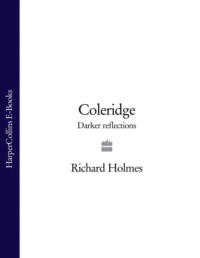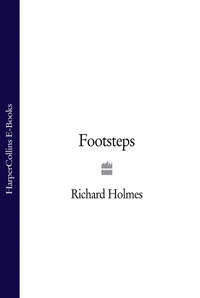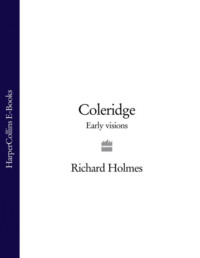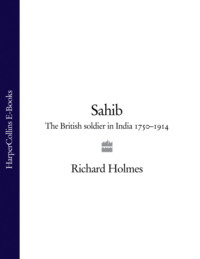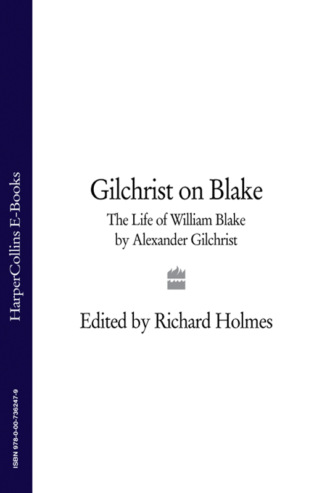
Полная версия
Gilchrist on Blake: The Life of William Blake by Alexander Gilchrist
On Peckham Rye (by Dulwich Hill) it is, as he will in after years relate, that while quite a child, of eight or ten perhaps, he has his ‘first vision’. Sauntering along, the boy looks up and sees a tree filled with angels, bright angel wings bespangling every bough like stars. Returned home he relates the incident, and only through his mother’s intercession escapes a thrashing from his honest father, for telling a lie…If these traits of childish years be remembered, they will help to elucidate the visits from the spiritual world of later years, in which the grown man believed as unaffectedly as ever had the boy of ten.
Gilchrist reverts continually to these visions: calmly asking what exactly they were, how Blake described them, and how they should be accounted for. Much apparently outlandish behaviour, such as the ‘scandalous’ Adam and Eve nude sunbathing incident at Lambeth, is given a reasonable and detailed explanation, in this case with a amusing reminder about the poet Shelley’s enthusiasm for the early naturist movement. It is interesting that clearly Anne had been able to prevent Macmillan from censoring this particular account.
Later, Blake’s poverty, social isolation and professional difficulties are shrewdly shown to have exacerbated the oddities of his temperament. Of the quarrel with the commercial publisher Cromek in 1815, a frankly ‘discordant episode’, Gilchrist writes, ‘In Blake’s own mind, where all should have been, and for the most part was, peace, the sordid conflict left a scar. It left him more tetchy than ever; more disposed to willful exaggeration of individualities already too prominent, more prone to unmeasured violence of expression. The extremes he gave way to in his designs and writings – mere ravings to such as had no key to them – did him no good with that portion of the public the illustrated Blair had introduced him to…Now, too, was established for him the damaging reputation “Mad”.’
All this is summarised in the decisive Chapter 35, boldly entitled: ‘Mad or Not Mad’. In many way this chapter is the psychological key to the entire biography. Here Gilchrist carefully defines the ‘special faculty’ of Blake’s imagination, and vindicates the profound spiritual sanity of the ‘gentle yet fiery-hearted mystic’. One after another, he calls to witness all Blake’s circle of friends, from Flaxman and Fuseli to Palmer and Linnell. In a robust passage Gilchrist rejects any modish Victorian interpretation of Blake’s visions. ‘No man, by the way, would have been more indifferent or averse than he (wide and tolerant as was his faith in supernatural revelations) towards the table-turning, wainscot-knocking, bosh-propounding “Spiritualism” of the present hour.’ Instead Gilchrist finally champions Blake in terms that Carlyle would have recognised: ‘Does not prophet or hero always seem “mad” to the respectable mob, and to polished men of the world…?’
Gilchrist’s remaining narrative problem lay in the dearth of material during Blake’s ‘dark years’ in London in the decade between 1808 and 1818, when he met his great patron and supporter, the young painter John Linnell, the first of the Ancients. Broadly his solution is to introduce the engaging stories of some of the more colourful characters who knew Blake during this time: the rapacious art dealer Cromek; the exuberant astrologer John Varley (for whom Blake painted the visionary portrait of the Flea); and the dandy art critic and poisoner (later championed by Oscar Wilde), Thomas Wainewright.
The last chapters are structured round the unpublished Reminiscences of Crabb Robinson from 1825, and the interviews with Palmer, Richmond and Tatham who knew Blake in the last years at Fountain Court. Here, from Chapter 34 onwards (‘Personal Details’), the biography is at its most intimate and moving. The final picture of Blake ‘chaunting Songs’ to Catherine, as he lay on his deathbed in the little upper room above the Thames, is unforgettable.
6
Gilchrist’s biography was immediately taken up by the Pre-Raphaelites and their circle. William Rossetti established himself as the leading nineteenth-century Blake scholar, and edited the first collection of Blake’s Poetical Works, published in the Aldine series in 1874. Algernon Swinburne, inspired by Gilchrist, wrote the first detailed assessment of Blake as a poet, which appeared as a long monograph, William Blake: A Critical Essay in 1868. In his Preface Swinburne spoke with admiration of Gilchrist’s ‘trained skill’ and ‘sense of selection’ as a biographer, and his ‘almost incomparable capacity of research and care in putting to use the results of such long and refined labour’.
Like Palmer, he felt the biography would endure, despite the tragic circumstances of its composition. This good that he did is likely to live after him; no part of it is likely to be interred in his grave.’ In saying this, Swinburne also gently re-opened the question of the posthumous collaboration between Anne and Alexander. ‘For the book, unfinished, was not yet incomplete, when the writer’s work was broken short off. All or nearly all the biographical part had been carried through to a good end. It remained for other hands to do the editing; to piece together the loose notes left, and to supply all that was requisite or graceful in the way of remark or explanation.’ Anne however remained strenuous in her denial of having contributed anything more than ‘editorial’ work.
Interest in Blake steadily revived, and within fifteen years Macmillan was ready to undertake a new edition. Anne Gilchrist had spent the previous four years in America with her children, writing about the work of Walt Whitman and forming an intense personal friendship with the poet. But on her return to England in June 1879, almost her first act was undertake the revision of the Blake biography for Macmillan. She had remained in close touch with the Rossettis, and with their advice began to correct minor errors of fact and dates. By March 1880 the work was being ‘pushed energetically through’.
Her son Herbert remarked: ‘Anne Gilchrist’s task of editing the second edition was not an easy one. It was a tradition in the family to avoid notes; to recast the text rather than to use them. Thus, too, as a consequence, her work as editor is not apparent.’ This is curious, as her editorial hand is much more evident in the 1880 edition, and its impact much more marked.
Her main task was to find a place for another major cache of correspondence, some forty newly discovered letters from Blake to his patron William Hayley. Thirty-four of them had been auctioned at Sotheby’s in 1878, and bought by the Rossettis. Dante Gabriel regarded them as ‘rather disappointing’, and largely concerned with mundane business matters. But together with the twelve letters to Thomas Butts, they filled in the picture of Blake’s middle years between 1800 and 1805. Clearly these could no longer be left in an Appendix.
Anne determined that they should be fully integrated into the narrative of the text. She inserted them with extraordinary skill between Chapter 16 and Chapter 20, adding short linking sentences, but largely allowing them to speak for themselves. By comparing the two editions, one can see how ingenuously she kept to Alexander’s original wording (often by the device of altering the order of his paragraphs), and how little she added of her own. She was, however, forced to delete a large part of Alexander’s account of the ‘soldier’ incident at Felpham, allowing it to be replaced by Blake’s own self-justifying letter to Butts. This was the one major cut she made in the entire biography, and it was not a happy one. It produced a smoother but more anodyne account.
Indeed overall, the changes in the second edition had a curiously muffling effect. The dramatic story of Blake’s Sussex period nearly doubled in length, but also halved in biographical impact. The picture of Blake’s strange inner life, was swamped and blurred by the mundane superfluity of Hayley materials. The fifty extra pages slowed the pace of the entire narrative.
This loss of pace was further increased by newly extended citations from the Prophetic Books. Though she still regarded any attempt to interpret Blake’s mythology as ‘a reckless adventure’, Anne hopefully read and re-read Jerusalem, finding ‘several more coherent and indeed beautiful passages’, and relating the poetry to the ‘sublime influence of the sea’ on Blake at Felpham. Finally she added half-a-dozen new extracts from both Jerusalem and Milton to Chapter 21, with a brief commentary on Blake’s use of names. She also referred the reader to Swinburne’s critical essay, as a possible guide ‘through the dark mazes of these labyrinthine, spectre-haunted books’. Further expansions included more quotations from the ‘Proverbs of Hell’, and further brief reflections on Blake’s mysticism.
But she also made cuts at certain points of controversy. She slightly shortened the Adam and Eve’ incident in Chapter 12, in deference to its supposed immorality. She also removed some of Alexander’s reflection on the sexual symbolism of The Daughters of Albion’, the old point of disagreement with Macmillan and ‘flustered Propriety’. Finally she censored a few of his more vivid but risqué phrases, such as the memorable reference to the music hall nude shows near Fountain Court.
Altogether the addition of the new letters, together with Anne’s expanded quotations from the Prophetic Books, and her prudential cuts, gave the second edition of 1880 greater authority as a work of reference. But it also damaged much of its original charm and energy as a biography.
The second edition was longer, slower and more ponderous. The elegant, lively narrative structure with its short concentrated chapters, as Alexander had originally devised it, was weakened and made more conventional. It lost something of the passionate excitement and directness of its original youthful conception. Ironically for all Anne’s sense of holding a sacred trust to her husband’s work, Alexander’s own voice is muted and dissipated. The second edition became more like a standard high Victorian volume of Life and Letters.
Nonetheless, the edition of 1880 continued the task of reestablishing Blake’s reputation on both sides of the Atlantic. Praise for Gilchrist’s heroic work was now universal, and Walt Whitman for one, saluted the rise of a new informal English style of biography, comparing it to the work of J.A. Froude. The Blake book is charming for the same reason that we find Froude’s Carlyle fascinating – it is minute, it presents the man as he was, it gathers together little things ordinarily forgotten; portrays the man as he walked, talked, worked, in his simple capacity as a human being. It is just in such touches – such significant details – that the profounder, conclusive, art of biographical narrative lies.’
Anne would still make no claims other than that of being ‘editor’ of Alexander’s work. Instead she added a long and passionate Memoir, praising his supreme dedication as a biographer. In it she made this thoughtful observation: ‘If I could briefly sketch a faithful portrait of Blake’s biographer, the attempt would need no apology, for if the work be of interest, so is the worker. A biographer necessarily offers himself as the mirror in which his hero is reflected; and we judge all the better of the truth and adequacy of the image by a closer acquaintance with the medium through which it comes to us.’ In the use of that one word ‘medium’, she might, at least unconsciously, have been calling attention to herself.
7
Anne Gilchrist later wrote the Blake entry for Leslie Stephen’s Dictionary of National Biography in 1882, and also a well-judged Life of Mary Lamb for the new and influential Eminent Women of Letters series, published by Allen Lane in 1883. She had other literary plans, including Lives of Wordsworth and Thomas Carlyle. But her heart was broken by the sudden and tragic death of her favourite daughter Beatrice.
This was the child they had nursed through scarlet fever at Cheyne Row, while Alexander was struggling to complete the biography. She was always closely associated in Anne’s mind with the early shared work on Blake. True to her mother’s early leanings towards science, Beatrice had been training in Edinburgh to qualify as one of Britain’s first women doctors. Possibly as the result of an unhappy love affair, she committed suicide at the age of twenty-five by taking cyanide in July 1881. Anne Gilchrist never really recovered from the death of Beatrice, so shortly after the publication of the second edition of Blake. She contracted cancer and died at Hampstead four years later in November 1885, aged only fifty-three, all her other literary plans unfulfilled.
Gilchrist’s original Life of William Blake, with its combative subtitle Pictor Ignotus (The Unknown Painter’), is one of the most influential of all the great mid-Victorian biographies. It rescued its subject from almost total obscurity, challenged the notion of Blake’s madness, and first defined his genius as both an artist and visionary poet combined. It set the agenda for modern Blake studies, and remains the prime source for all modern Blake biographies. It remains wonderfully readable today, and salvaged from death, it still vibrates with extraordinary life.
Yet like so many works of art, it was produced at great cost, and under mysterious conditions. In the absence of an original manuscript of the 1863 biography, the mystery will always remain just how much of this first, ground-breaking text we really owe to Alexander Gilchrist or to Anne; or to some indefinable Blakean collaboration between the two.
The text printed here is that of the first edition of 1863, together with the letters to Thomas Butts in an Appendix.
ONE Preliminary
From nearly all collections or beauties of The English Poets,’ catholic to demerit as these are, tender of the expired and expiring reputations, one name has been hitherto perseveringly exiled. Encyclopaedias ignore it. The Biographical Dictionaries furtively pass it on with inaccurate despatch, as having had some connexion with the Arts. With critics it has had but little better fortune. The Edinburgh Review, twenty-seven years ago, specified as a characteristic sin of ‘partiality’ in Allan Cunningham’s pleasant Lives of British Artists, that he should have ventured to include this name, since its possessor could (it seems) ‘scarcely be considered a painter’ at all. And later, Mr Leslie, in his Handbook for Young Painters, dwells on it with imperfect sympathy for awhile, to dismiss it with scanty recognition.
Yet no less a contemporary than Wordsworth, a man little prone to lavish eulogy or attention on brother poets, spake in private of the Songs of Innocence and Experience of William Blake, as ‘undoubtedly the production of insane genius,’ (which adjective we shall, I hope, see cause to qualify), but as to him more significant than the works of many a famous poet. There is something in the madness of this man,’ declared he (to Mr Crabb Robinson), ‘which interests me more than the sanity of Lord Byron and Walter Scott.’
Of his Designs, Fuseli and Flaxman, men not to be imposed on in such matters, but themselves sensitive – as Original Genius must always be – to Original Genius in others, were in the habit of declaring with unwonted emphasis, that ‘the time would come’ when the finest ‘would be as much sought after and treasured in the portfolios’ of men discerning in art, ‘as those of Michael Angelo now.’ ‘And ah! Sir,’ Flaxman would sometimes add, to an admirer of the designs, ‘his poems are grand as his pictures.’
Of the books and designs of Blake, the world may well be ignorant. For in an age rigorous in its requirement of publicity, these were in the most literal sense of the words, never published at all: not published even in the mediæval sense, when writings were confided to learned keeping, and works of art not unseldom restricted to cloister-wall or coffer-lid. Blake’s poems were, with one exception, not even printed in his life-time; simply engraved by his own laborious hand. His drawings, when they issued further than his own desk, were bought as a kind of charity, to be stowed away again in rarely opened portfolios. The very copper-plates on which he engraved, were often used again after a few impressions had been struck off; one design making way for another, to save the cost of new copper. At the present moment, Blake drawings, Blake prints, fetch prices which would have solaced a life of penury, had their producer received them. They are thus collected, chiefly because they are (naturally enough) already ‘RARE,’ and ‘VERY RARE.’ Still hiding in private portfolios, his drawings are there prized or known by perhaps a score of individuals, enthusiastic appreciators, – some of their singularity and rarity, a few of their intrinsic quality.
At the Manchester Art-Treasures Exhibition of 1857, among the select thousand water-colour drawings, hung two modestly tinted designs by Blake, of few inches size: one the Dream of Queen Catherine, another Oberon and Titania. Both are remarkable displays of imaginative power, and finished examples in the artist’s peculiar manner. Both were unnoticed in the crowd, attracting few gazers, fewer admirers. For it needs to be read in Blake, to have familiarized oneself with his unsophisticated, archaic, yet spiritual ‘manner,’ – a style sui generis as no other artist’s ever was, – to be able to sympathize with, or even understand, the equally individual strain of thought, of which it is the vehicle. And one must almost be born with a sympathy for it. He neither wrote nor drew for the many, hardly for work’y-day men at all, rather for children and angels; himself’a divine child,’ whose playthings were sun, moon, and stars, the heavens and the earth.
In an era of academies, associations, and combined efforts, we have in him a solitary, self-taught, and as an artist, semi-taught Dreamer, ‘delivering the burning messages of prophecy by the stammering lips of infancy,’ as Mr Ruskin has said of Cimabue and Giotto. For each artist and writer has, in the course of his training, to approve in his own person the immaturity of expression Art has at recurrent periods to pass through as a whole. And Blake in some aspects of his art never emerged from infancy. His Drawing, often correct, almost always powerful, the pose and grouping of his figures often expressive and sublime, as the sketches of Raffaelle or Albert Dürer, often, on the other hand, range under the category of the ‘impossible;’ are crude, contorted, forced, monstrous, though none the less efficient in conveying the visions fetched by the guileless man from Heaven, from Hell itself, or from the intermediate limbo tenanted by hybrid nightmares. His prismatic colour, abounding in the purest, sweetest melodies to the eye, and always expressing a sentiment, yet, looks to the casual observer slight, inartificial, arbitrary.
Many a cultivated spectator will turn away from all this, as from mere ineffectualness, – Art in its second childhood. But see this sitting figure of Job in his Affliction, surrounded by the bowed figures of wife and friend, grand as Michael Angelo, nay, rather as the still, colossal figures fashioned by the genius of old Egypt or Assyria. Look on that simple composition of Angels Singing aloud for Joy, pure and tender as Fra Angelico, and with an austerer sweetness.
It is not the least of Blake’s peculiarities, that instead of expressing himself, as most men have been content to do, by help of the prevailing style of his day, he, in this, as every other matter, preferred to be independent of his fellows; partly by choice, partly from the necessities of imperfect education as a painter. His Design has conventions of its own: in part, its own, I should say, in part, a return to those of earlier and simpler times.
Of Blake, as an Artist, we will defer further talk. His Design can ill be translated into words, and very inadequately by any engraver’s copy. Of his Poems, tinged with the very same ineffable qualities, obstructed by the same technical flaws and impediments – a semi-utterance as it were, snatched from the depths of the vague and unspeakable – of these remarkable Poems, never once yet fairly placed before the reading public, specimens shall by-and-bye speak more intelligibly for themselves. Both form part in a Life and Character as new, romantic, pious – in the deepest natural sense – as they: romantic, though incident be slight; animated by the same unbroken simplicity, the same high unity of sentiment.
Конец ознакомительного фрагмента.
Текст предоставлен ООО «ЛитРес».
Прочитайте эту книгу целиком, купив полную легальную версию на ЛитРес.
Безопасно оплатить книгу можно банковской картой Visa, MasterCard, Maestro, со счета мобильного телефона, с платежного терминала, в салоне МТС или Связной, через PayPal, WebMoney, Яндекс.Деньги, QIWI Кошелек, бонусными картами или другим удобным Вам способом.




